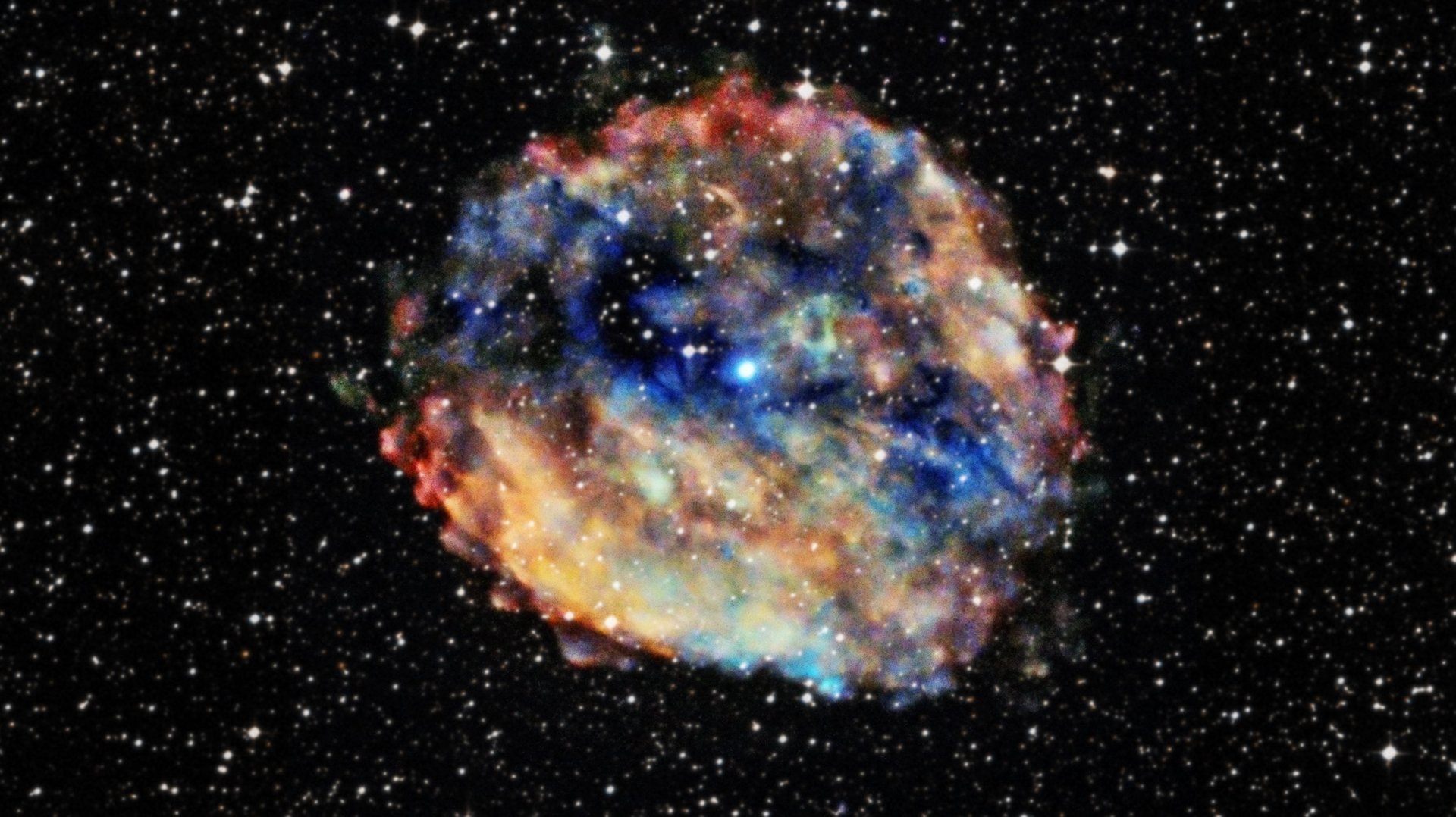Astronomers tracked down fast radio bursts to a galaxy 2.5 billion light years away
If humans could see radio waves, the sky would appear to us like a disco ball. Instead of relatively sedate stars, we’d see flashes like strobe likes all over the place.


If humans could see radio waves, the sky would appear to us like a disco ball. Instead of relatively sedate stars, we’d see flashes like strobe likes all over the place.
Some would be pulsars, repeating regularly; these could be the fast-spinning remnants of dead suns. But others, called fast radio bursts, or FRBs, occur randomly, flashing just once, and haven’t been associated with any actually visible object—until now.
A team of astronomers led by Shami Chatterjee of Cornell University linked a fast radio burst called FRB 121102 to a single dwarf galaxy some 2.5 billion light years away. It’s the first time that anyone has been able to show the origin of an FRB, and the only instance so far found in which one repeats (though not regularly). The group reported their results in studies appearing in Nature and the Astrophysical Journal Letters.
The FRB 121102 is off-center from the galaxy’s core, and whatever made it is small, on the order of hundreds of kilometers in size. To emit a radio signal we can see from so far away, it has to be pumping out more energy per second than some whole galaxies.
At a press conference announcing the results, Chatterjee said the repetition is an important clue as to what FRBs are. “At a stroke it rules out all these explosive or cataclysmic models,” such as supernovas.
FRBs were first observed in 2001 (though nobody recognized what they were until 2007), and astronomers have found less than 20 of them since. FRBs differ from pulsars and other kinds of radio emissions because they last only milliseconds, and their wavelength increases over the life of the burst—if they were visible light, they would appear to get redder. They are also clearly from very far away.
It’s possible thousands occur every day—but the reason we don’t detect more of them is that the odds of one being in a specific patch of sky are small. Even if you do detect one, the problem of associating it with a single visible object, like a galaxy, is that there might still be dozens, or even hundreds of galaxies in that same little area of the sky.
Tracking down FRB 121102 required a combination of the Arecibo Observatory in Puerto Rico, the Very Large Array (VLA) in New Mexico, and the Very Long Baseline Interferometer (VLBI) in Europe. Arecibo offered a huge radio dish—a big “light bucket” that can pick up faint signals in a wide area. The VLA and VLBI offered the ability to resolve small objects.
Arecibo data from August and September 2016 showed several bursts of radio energy. To narrow down the location the team used a technique called interferometry—linking up multiple radio telescopes. Using multiple antennas simulates a larger instrument, and improves the resolution to the point where the scientists could narrow down the FRBs point of origin. They then used an optical telescope to match up the FRBs possible points of origin with a visible galaxy.
Now that astronomers have seen an FRB that not only repeats but is also linked to something we can see, it’s possible to start exploring what it is, Chatterjee said.
According to study co-author Sara Burke-Spolaor, of the National Radio Astronomy Observatory in Socorro, New Mexico, one possibility is that they are blobs of gas getting hit by powerful jets. Galactic nuclei have supermassive black holes at their centers, and those black holes spew jets of subatomic particles such as electrons, positrons (the antimatter siblings of electrons) and some atomic nuclei at near the speed of light. (The origins of the jets are still somewhat mysterious). When a passing gas cloud hits one, it gets blasted and releases a burst of radio energy.
Another possibility is some neutron-star-related phenomenon. It might be some interaction between a neutron star and something nearby that happens repeatedly, but not regularly. Neutron stars are thought to be the ancient remnants of large stars that exploded, leaving behind a dense core. The radio signals of these stars are called pulsars, and on Earth we can see them repeat at a regular rate. Such stellar remnants exhibit some extreme physics that could generate the kind of energy an FRB emits.
Burke-Spolaor added that it also possible there are different flavors of FRBs, some that repeat and some that don’t. “There could be more than one cause,” she said. This one could also just be an anomaly, different from all the others. “There are more models for FRBs than FRBs,” said Chatterjee.